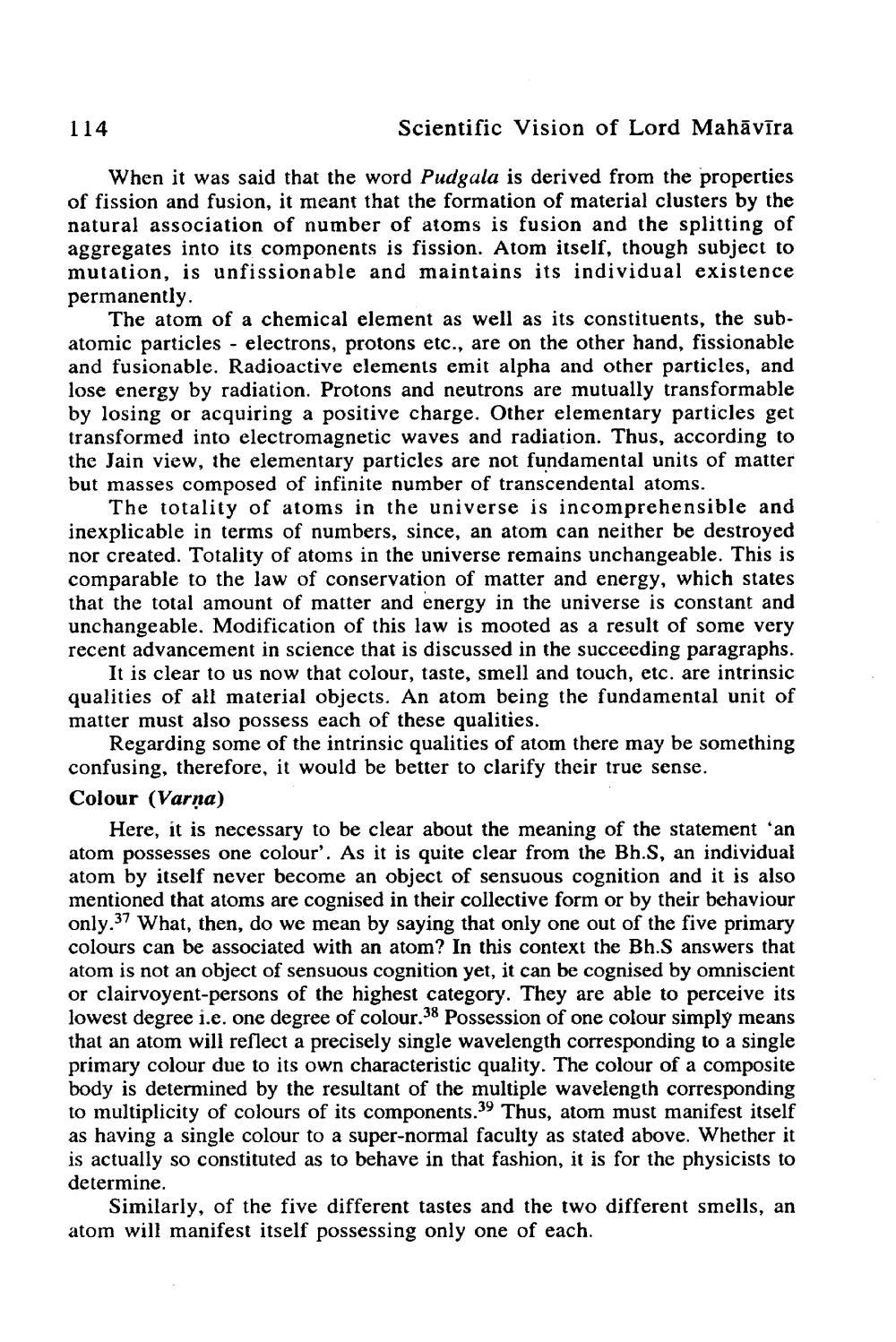________________
114
Scientific Vision of Lord Mahāvīra
When it was said that the word Pudgala is derived from the properties of fission and fusion, it meant that the formation of material clusters by the natural association of number of atoms is fusion and the splitting of aggregates into its components is fission. Atom itself, though subject to mutation, is unfissionable and maintains its individual existence permanently.
The atom of a chemical element as well as its constituents, the subatomic particles - electrons, protons etc., are on the other hand, fissionable and fusionable. Radioactive elements emit alpha and other particles, and lose energy by radiation. Protons and neutrons are mutually transformable by losing or acquiring a positive charge. Other elementary particles get transformed into electromagnetic waves and radiation. Thus, according to the Jain view, the elementary particles are not fundamental units of matter but masses composed of infinite number of transcendental atoms.
The totality of atoms in the universe is incomprehensible and inexplicable in terms of numbers, since, an atom can neither be destroyed nor created. Totality of atoms in the universe remains unchangeable. This is comparable to the law of conservation of matter and energy, which states that the total amount of matter and energy in the universe is constant and unchangeable. Modification of this law is mooted as a result of some very recent advancement in science that is discussed in the succeeding paragraphs.
It is clear to us now that colour, taste, smell and touch, etc. are intrinsic qualities of all material objects. An atom being the fundamental unit of matter must also possess each of these qualities.
Regarding some of the intrinsic qualities of atom there may be something confusing, therefore, it would be better to clarify their true sense. Colour (Varna)
Here, it is necessary to be clear about the meaning of the statement 'an atom possesses one colour'. As it is quite clear from the Bh.S, an individual atom by itself never become an object of sensuous cognition and it is also mentioned that atoms are cognised in their collective form or by their behaviour only.37 What, then, do we mean by saying that only one out of the five primary colours can be associated with an atom? In this context the Bh.S answers that atom is not an object of sensuous cognition yet, it can be cognised by omniscient or clairvoyent-persons of the highest category. They are able to perceive its lowest degree i.e. one degree of colour.38 Possession of one colour simply means that an atom will reflect a precisely single wavelength corresponding to a single primary colour due to its own characteristic quality. The colour of a composite body is determined by the resultant of the multiple wavelength corresponding to multiplicity of colours of its components.39 Thus, atom must manifest itself as having a single colour to a super-normal faculty as stated above. Whether it is actually so constituted as to behave in that fashion, it is for the physicists to determine.
Similarly, of the five different tastes and the two different smells, an atom will manifest itself possessing only one of each.




